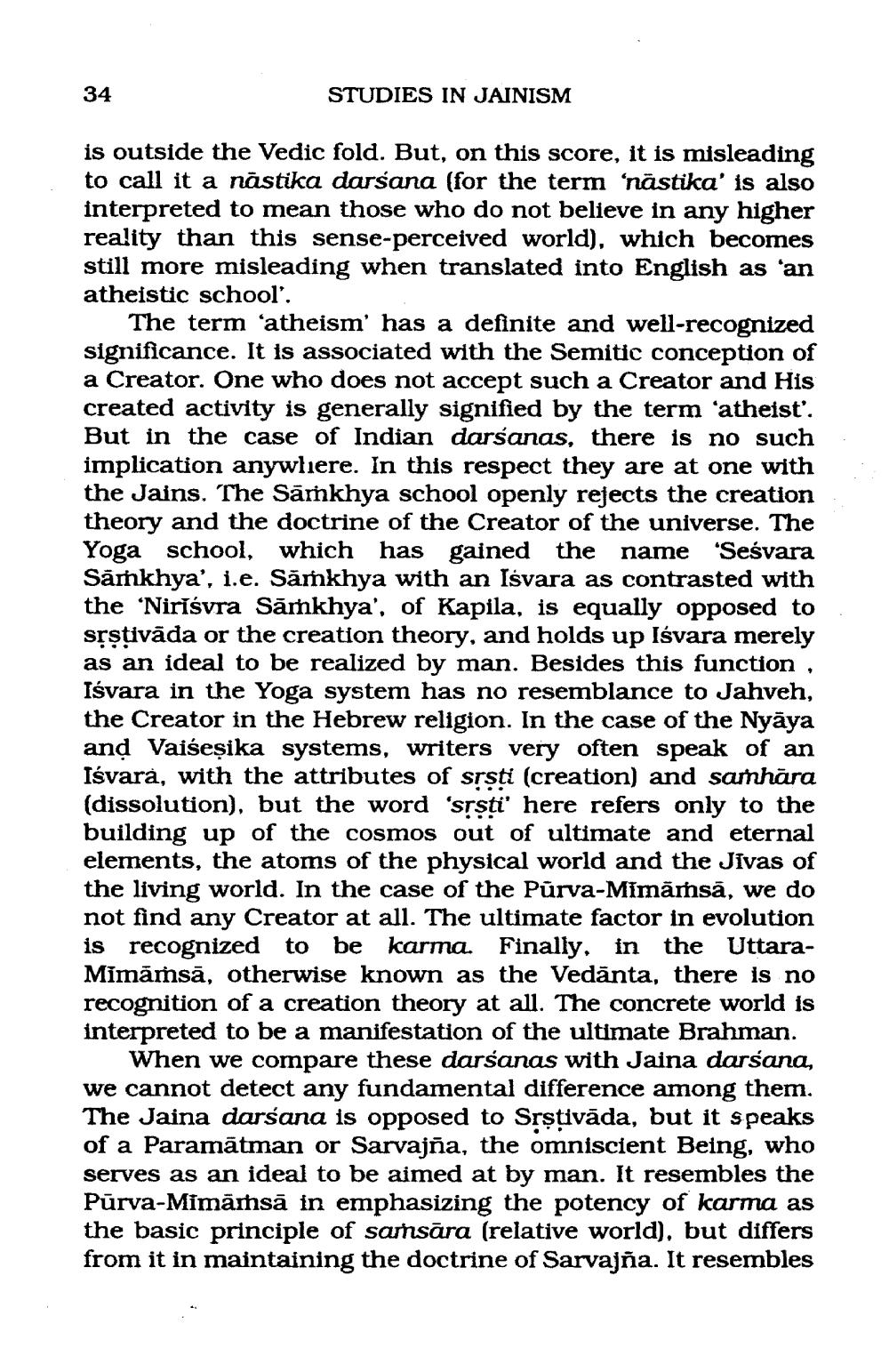________________
34
STUDIES IN JAINISM
is outside the Vedic fold. But, on this score, it is misleading to call it a nastika darsana (for the term 'nastika' is also interpreted to mean those who do not believe in any higher reality than this sense-perceived world), which becomes still more misleading when translated into English as 'an atheistic school'.
The term 'atheism' has a definite and well-recognized significance. It is associated with the Semitic conception of a Creator. One who does not accept such a Creator and His created activity is generally signified by the term 'atheist'. But in the case of Indian darsanas, there is no such implication anywhere. In this respect they are at one with the Jains. The Samkhya school openly rejects the creation theory and the doctrine of the Creator of the universe. The Yoga school, which has gained the name 'Seśvara Samkhya', i.e. Samkhya with an Isvara as contrasted with the 'Niriśvra Samkhya', of Kapila, is equally opposed to sṛṣṭivada or the creation theory, and holds up Isvara merely as an ideal to be realized by man. Besides this function, Isvara in the Yoga system has no resemblance to Jahveh, the Creator in the Hebrew religion. In the case of the Nyaya and Vaiseṣika systems, writers very often speak of an Isvara, with the attributes of sṛsti (creation) and samhāra (dissolution), but the word 'sṛṣṭi' here refers only to the building up of the cosmos out of ultimate and eternal elements, the atoms of the physical world and the Jivas of the living world. In the case of the Purva-Mimāmsā, we do not find any Creator at all. The ultimate factor in evolution is recognized to be karma. Finally, in the UttaraMimāmsā, otherwise known as the Vedanta, there is no recognition of a creation theory at all. The concrete world is interpreted to be a manifestation of the ultimate Brahman.
When we compare these darsanas with Jaina darsana, we cannot detect any fundamental difference among them. The Jaina darsana is opposed to Sṛṣṭivada, but it speaks of a Paramātman or Sarvajña, the omniscient Being, who serves as an ideal to be aimed at by man. It resembles the Pūrva-Mimāmsā in emphasizing the potency of karma as the basic principle of saṁsāra (relative world), but differs from it in maintaining the doctrine of Sarvajña. It resembles




